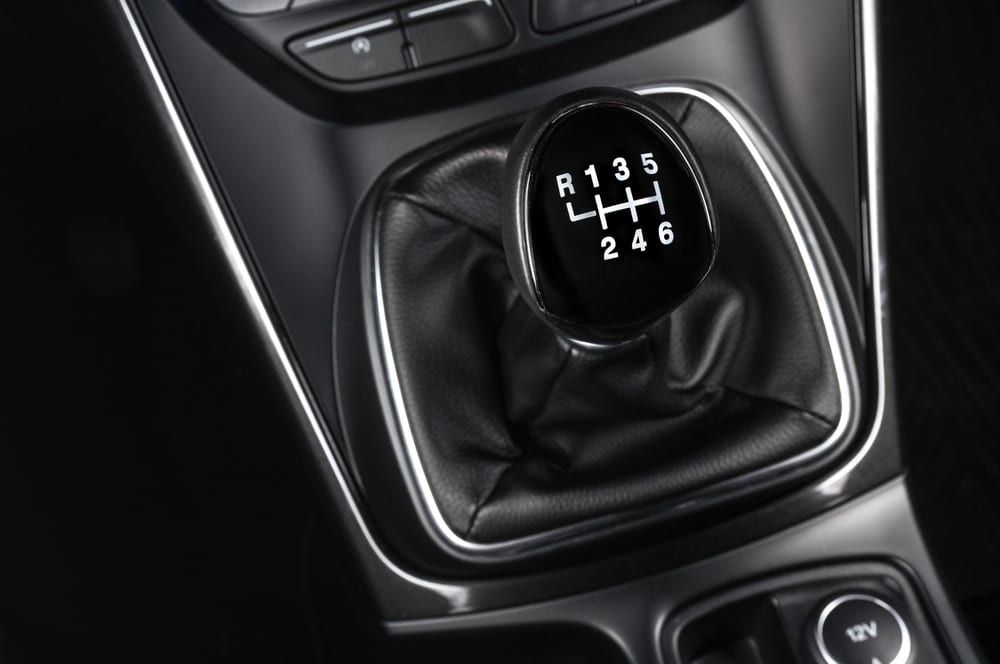

If you prefer driving a car with a manual transmission, you may be interested to know how long it’s expected to last. Luckily, most stick shifts last a significant amount of time depending on driving style. Most manual drivers will need to change the transmission fluid and the clutch before they need a new transmission — however, failure to maintain these parts will hurt the transmission itself too.
Unlike automatic transmission cars, there are fewer chances for hydraulic or electrical failures in a manual transmission. Essentially, it’s made of simpler stuff: gears, a gear stick, and a clutch pedal.
That being said, it’s hard to pinpoint a specific mileage point or year when you can expect your manual transmission to wear out. When one does fail, it’s usually a result of leaking manual transmission fluid — which typically doesn’t need changing. If a leak occurs, a repair using the vehicle manufacturer recommended fluid is necessary.
Driving style is another factor affecting manual transmission life. Poor usage of the stick shifter or clutch can drastically impact your transmission’s longevity. Additionally, frequent off-road driving may require transmission maintenance, such as replacing heat-damaged oil, as often as every 15,000 miles.
With proper driving, use, and maintenance of the manual transmission’s components, you can expect it to last over 120,000 miles. By keeping an eye out for transmission oil leaks and operating the clutch and gears correctly, you can expect a long life out of your transmission.
4 Factors Affecting Manual Transmission Life
1. Incorrect Fluid: Each manual transmission requires a very specific fluid type and grade, all allowing a unique amount of slip. The fluid surrounds the gears and transfers heat to move them smoothly without wearing them down in the process. An improper fluid change (as a result of a leak or some other maintenance issue) alters shifting-feel and slippage. It either generates too little or too much heat, causing parts to wear down faster and potentially fail altogether.
2. Slipping the Clutch: When you slip the clutch, you slowly lift your foot off the accelerator to engage the clutch, but don’t fully use it to shift gears. It’s a more common action when easing into gear or stopped on a hill. This adds wear and tear to the clutch by overheating it, and can drastically affect the overall life of the manual transmission system.
- Grinding Gears: Fortunately, grinding gears has far less effect on transmission life. This happens when you only half-engage the clutch or try to shift without disengaging entirely, creating an awful “grinding” noise. A driver would need to grind their gears for an hour or more to actually harm transmission longevity; the issue is usually resolved in less than a second.
3. Engine Braking: When you downshift to slow down instead of engaging the braking system, you may enhance your brakes’ lifespan, but not necessarily your manual transmission. Shifting into neutral, releasing the clutch, and then engaging the brakes contributes most to transmission longevity.
4. Aggressive Driving: When driving like you’re on a racetrack when you’re actually on a busy highway (and not in a sports car equipped for such maneuvers), you’re revving harder than you should be and dropping the clutch too abruptly. This will cause the wear out of your manual transmission’s supplemental parts, like the clutch, release bearing, and flywheel.
Make Your Manual Transmission Last
The key to getting the most out of your manual transmission is attending to maintenance needs and driving intentionally. Don’t put too much stress on your clutch and gears from aggressive driving styles or poor usage. Additionally, pay attention to the fluids technicians use when adding them to your manual transmission to make sure it’s OEM recommended. This way, you’ll get as long of a life out of your manual transmission as you can.



